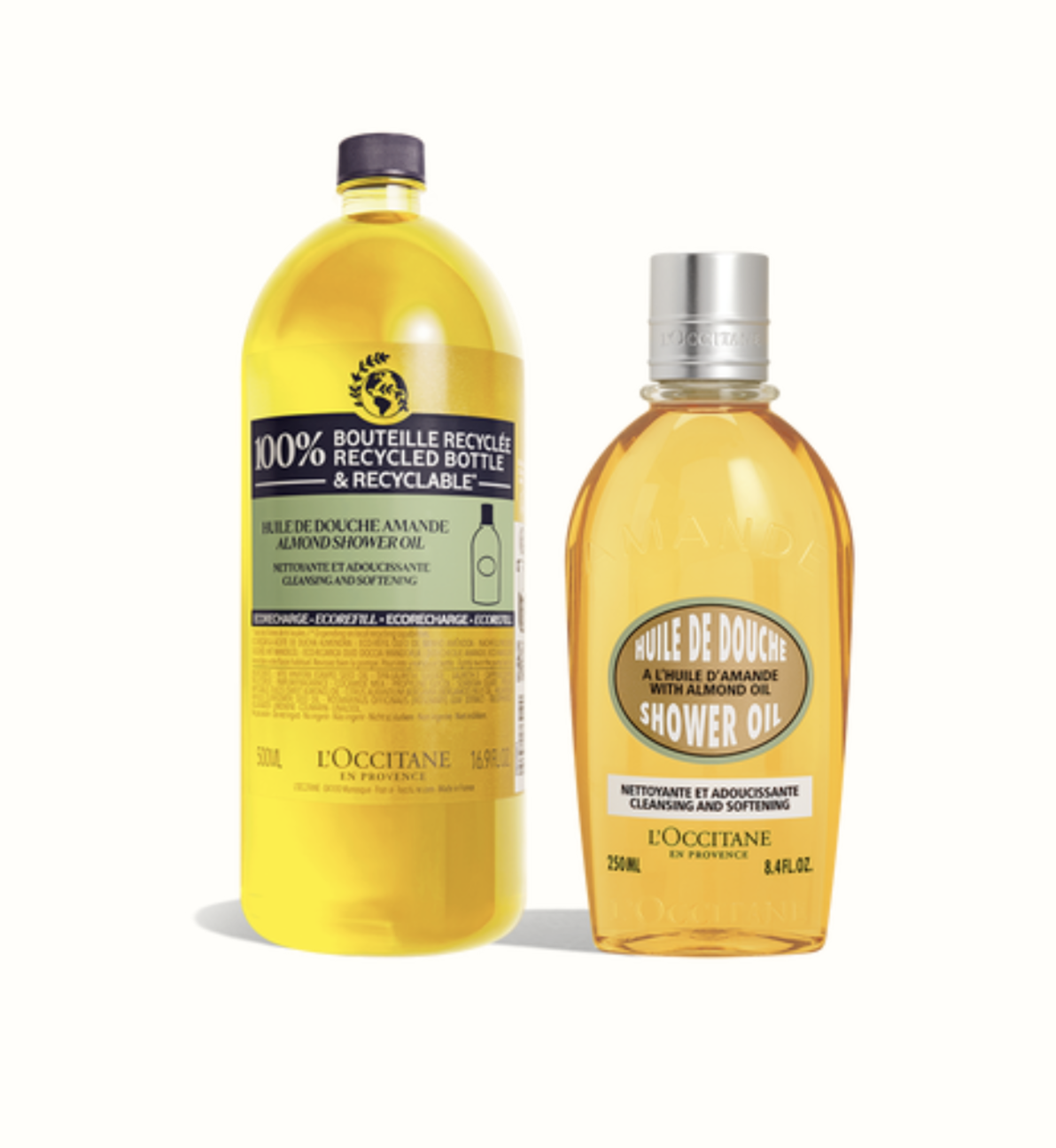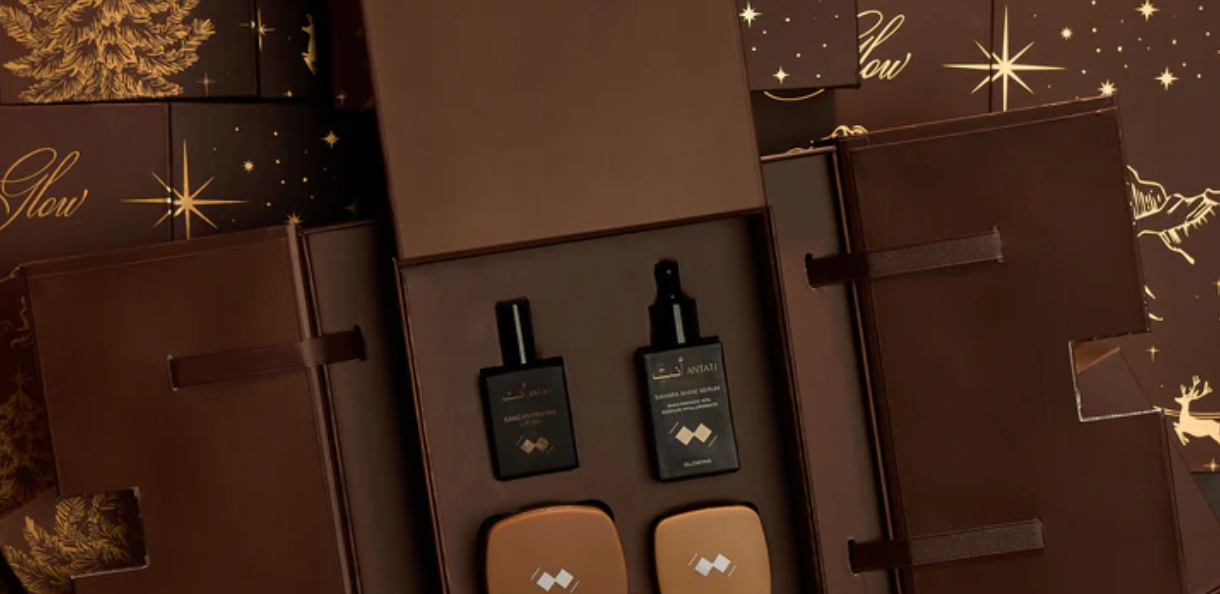
L’Occitane en provence, impact native?
This case study is part of THE REFILLABLE BEAUTY REPORT
The French Native brand always had a sustainability ethos from the sourcing of its natural ingredients in the south of France to the reduction of the impact of its packaging, with, for example, the launch, as early as 1976, of a deposit system for its glass packaging.
L’OCCITANE, supported by its Packaging R&D team, continually improve the brand’s packaging, focusing on both the existing and future product portfolio. Using tools such as lifecycle assessment (LCA), they oversee all packaging decisions, taking account of the carbon footprint from the extraction of raw materials through to the end of the lifecycle of the product. They also work on finding future solutions: materials that are recycled, recyclable or renewable
L’Occitane sustainability strategy for packaging follows the 3R principles: Reduce, Reuse, Recycle and takes inspiration from the 10R waste Hierarchy: Refuse, Reduce, Resell/Reuse, Repair, Reprocess, Refurbish, Remanufacture, Repurpose, Recycle and Recover (energy) - (more info here).
Within the Reduction strategy, L’Occitane has instigated actions to reduce plastic with:
- Elimination of plastic cellophane around all products - effective since 2022
- Replacement of all plastic spatulas and testers with stainless steel
- Transformation of the testers and spatulas into cardboard material
- Removal of all unnecessary plastics: no more plastic inserts in packaging or package offering. They are either made of cardboard or moulded cellulose.
The brands’ first actions consisted of the replacement of conventional packaging with a doypack/pouch for refilling body, skin or hair care products since 2008. As of today, this has helped the French brand reduce its plastic consumption by 10% annually. The brand has now now release 100% PCR PET bottle to replace the non-recyclable pouches.

The previous refill pouch was not recyclable technically. They can be if they are made in mono-material but the recycling technology does not allow for qualitative reintegration of plastic pouches. Since 2023 L’ Occitane has been moving to a new refill packaging using simplified design bottles in 100% recycled PET bottles instead of pouches. The first 3 references have been put on the market in June 2023 and a full roll-out is planned by the beginning of 2025 for the entire existing portfolio.
This increases the recyclability of the packaging and the end-of-life of plastics. All 500ml eco-recharge in souple plastic is moved into rigid plastic containers. “ For us, it’s about looking at the product life cycle, and the product in its ecosystem” we want to ensure a full “clean” circle.
L’Occitane is an active member the Ellen Mac Arthur foundation, a “charity committed to creating a circular economy, which is designed to eliminate waste and pollution, circulate products and materials (at their highest value), and regenerate nature. It’s an economic system that delivers better outcomes for people, and the environment. They develop and promote the idea of a circular economy.” They engage private organisations to achieve circular economy goals through the Global Commitment which L’Occitane is an active member.
This case study is part of THE REFILLABLE BEAUTY REPORT
Reuse strategy
Within the Reuse strategy, the company has developed in-store refill fountains for rinse-off beauty care products such as shampoo, shower gel, conditioner or else, since June 2020. It is now deployed in 33 countries (is ti correct?); there are more than 100 fountains today available in L’Occitane stores around the world.
The pilot fountains were installed in 2020, 2 in Germany and 1 in Spain, and the project was released in the market in June 2021 in Paris, France and elsewhere. A sterilising flash system is added to the machine allowing a safe “cleaning” of the consumer’s reusable bottle. The technology comes from Claranor, for the decontamination of packaging by pulsed light.
In order to refill, the beauty advisor would first check the bottle brought back by the client and will put it under the flash steriliser, before refilling the bottle with the desired product. Then the machine will print a label with product details (product name and function, INCI list, batch number for traceability, etc.).
Refillable bottles are made of 100 % PCR and recyclable Aluminium bottles.
“ With this process, we can analyse the purchasing journey and on average, there is one refillable action per store per day. Which is low, but we know that refill is a new habit that needs education and time for implementation,” explains David Bayard - R&D Packaging Director at L’Occitane. ``Consumers are buying for content not content, so we need to give value to the container.”
In early 2022 they released the body cream, ultra-rich Body cream, in a refillable packaging, with an operculated refill for clean and safe refill. Initially, the plastic jar was quite large. This has allowed the French brand to reduce the use of plastic while ensuring safe refill with an inner cup.
The outer packaging is in aluminium for longevity and is fully recyclable if the consumer decides to stop reusing and refilling it.
The brand released its best-selling face serum in 2018 - Reset Nuit Huile-en-Serum Immortelle Reset 30ml - and is now available in a glass container with a spout of the refill adapted to the existing bottle neck to allow safe refill with the small refill pouch available in-store.
This is one of the few refill pouches for a leave-on skincare product on the market (editor’s note).
Other refills include the Immortelle Harmonie Cream.
“We think that refillables are hard to measure because they are on a long cycle, from purchase to use, to refill. So we need to accelerate to process to increase adoption, but for now, we observe that with regards to “crème ultra riche corps karité”, more than 20% of consumers have purchased a refill, and on other refill products like eco-recharge, we observe 50% repurchase.” explains David Bayard.
L’Occitane has the ability to deploy refillable solutions through its own stores. In-store beauty advisors are trained to push more sustainable practices to influence consumers in the right direction. Refill works better if it is understood and valued by the consumers. By informing and supporting a more sustainable lifestyle, customer-facing staff are able to move the right solutions forward.
Overall, consumer adoption of refillable solutions is dependent on hygiene, quality, pricing and brand consistency. The brand offering and practices must be in alignment with brand ethos. It’s a constant ongoing work to “cultivate change” in order to ensure consumer adoption. Repeat, repeat, repeat. A new habit comes from repetition, and it will take time., but it works.
“Thanks to our own stores, we are able to test measures before adopting them. And consumer-facing staff are a key element of our success,” emphasises David Bayard
L’Occitane is also serving the hospitality industry and is offering dispensing bottles to hotels. They have been working on a refillable solution that incorporates an elegant outer packaging that can be fixed to the wall in the hotel bathroom and refilled with a specific cartridge. Design and elegance are paramount in hotel offerings, so the brand has been working on developing packaging displaying a keepsake object rather than just a simple shampoo or shower gel bottle.
On the other end, refills must be extremely simplified, and become minimalist. The parent / host packaging must become an iconic representation of the brand. In beauty we sell experience, and this experience must be all throughout product use. With refill, consumers will only refill products that work and that they highly value, so we must not damage the perceived value by bringing refillable solutions misaligned with the brand ethos.
Key Learnings
L’Occitane found that a certain part of the global population is fully convinced and committed to taking on sustainable actions but the figure is frozen at the 20% average. The brand ambitions to convert 50% of its consumer base to more sustainable practices. In order to achieve this ambitious target it needs to set in place easily implementable solutions that are not too technical or complex and that make sense for the end user. The new gesture must be intuitive.
Enhancing customer service and support in-store through premiumisation is another important component. It is permissible to talk about the brand's action to better serve people and the environment during the customer journey in-store, which offers longer service times and opportunities for conversation. Informing consumers on the brand commitment can generate engagement, and increase loyalty to the brand and increase repurchase. Improving the care towards consumers in their entire journey with the brand will support the success of L'Occitane's sustainability initiatives. Success will come with the implementation of a general strategy that must work flawlessly throughout the customer journey.
Key Takeaways
This case study is interesting because of the fact that L’Occitane has its own store and staff who can leverage the brand action to increase consumer engagement. This demonstrates that sustainability will work if it is incorporated within the consumer journey and if it is aligned with the brand proposition. Adoption may take a while, and solutions need to help consumers, because “convenience” remains the main hindrance to more sustainable practices/lifestyle.

